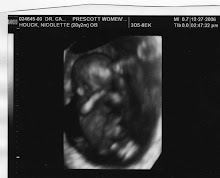 http://www.interet-general.info/IMG/virus-hiv-1.gif
http://www.interet-general.info/IMG/virus-hiv-1.gifAIDS
S.1 Origin and Prevalence of HIV
S.2 Phase of an HIV infection
Category A: Acute Phase
Category B: Chronic Phase
Category C: AIDS
S.3 HIV structure and Life Cycle
Life Cycle
Transmission and Prevention of HIV
HIV testing and treatment for HIV
S.1 Origin of and Prevalence of HIV
A. Originated in Africa and traveled to the US by the Caribbean
B. Has been found in the blood since 1959
C. Two Types:
HIV
HIV-2
D. The first document in the states was a 15 year old; 1969
1. Prevalence of HIV
A. AIDS is pandemic because the disease is prevalent to the whole population of the world
B. about 38.6 people in the world are currently infected
C. The hardest hit regions:
Sub-Saharan Africa and Asia
24 million living with the HIV infection
over 20% of the adults have HIV
India has the highest number of HIV infected People
followed by south Africa
Latin America and the Caribbean
AIDS is being fueled by the sex industry
People who work in the sex industry is as high as 16%
Leading cause of death between the ages of 15-44
2nd highest hit place in the world
· North America, Europe, and Central Asia
1. These countries have 1 million people living with it
2. 70% of HIV is Hispanics and African Americans
· North Africa and The Middle East
1. 90% of the people living with HIV live in Sudan.
· Oceania
1. Over 90% of the people infected live Papua, New Guinea
2. Australia has about 16 thousand people infected
S.2 Phases of HIV Infection
A. HIV occurs in several subtypes
1. HIV-1C
2. HIV-1B
Category A:
A. Has no apparent symptoms
B. Highly infectious
C. Has CD4 T cell: is at least 800 cells
D. 1-2% of people may have flu like symptoms
E. takes about 25 days to detect in the system
2. Category B:
A. CD4 Count of 499 and 200 cells
B. May have symptoms of a yeast infection, dysplasia, prolonged diarrhea, thick sores on the tongue
3. Category C:
A.diagnosed with AIDS
B.CD4 count below 300
C.A person has one or more of the 25 AIDS defining illnesses
Pneumonia
Mycobacterium Tuberculosis
Toxoplasmic encephalitis
 http://rds.yahoo.com/_ylt=A0S020pdrChIM0QBvhGjzbkF/SIG=12bufcl2m/EXP=1210711517/**http://history.nih.gov/NIHInOwnWords/docs/page_01d.html
http://rds.yahoo.com/_ylt=A0S020pdrChIM0QBvhGjzbkF/SIG=12bufcl2m/EXP=1210711517/**http://history.nih.gov/NIHInOwnWords/docs/page_01d.htmlKaposi’s sarcoma
Invasive Cervical Cancer
D.Death usually follows about 2 to 4 years
S.3 HIV Structure and Life Cycle
A. HIV consists of two single strands of RNA
· Reverse Transcriptase- catalyzes reverse Transcription which is the conversion of the viral RNA to viral DNA
· Integrase- catalyzes the integration of the viral DNA into the DNA of the host cell
· Protease- catalyzes the breakdown of the newly synthesized viral polypeptides into functional viral proteins
 http://rds.yahoo.com/_ylt=A0S020kMqyhIt0cBn.SjzbkF/SIG=12esbdvv6/EXP=1210711180/**http://www.cco.caltech.edu/~sciwrite/journal03/salter.html
http://rds.yahoo.com/_ylt=A0S020kMqyhIt0cBn.SjzbkF/SIG=12esbdvv6/EXP=1210711180/**http://www.cco.caltech.edu/~sciwrite/journal03/salter.html1. HIV life Cycle
· Attachment: during this the HIV binds to the plasma membrane
· Fusion- HIV fuses, and virus begins to enter cell
· Entry- proteins coats are removed
· Reverse transcription
· Integration
· Biosynthesis and cleavage
· Assembly
· Budding
2. Transmission and prevention of HIV
A. Transmitted sexually
B. Needle sharing
C. Through transfusions
D. Blood, semen, vaginal fluids, and breast milk has the highest concentration of HIV infection
 http://www.fountainpharm.com/nfl-hiv-tests.html
http://www.fountainpharm.com/nfl-hiv-tests.html3. HIV testing and Treatment for HIV
A. Urine, Blood, and oral tests are now available
B. Results within 20 min
C. Takes about 25 days for the antibodies to be shown
 http://rds.yahoo.com/_ylt=A0S020m4qyhIeF0BErejzbkF/SIG=128t7ptfm/EXP=1210711352/**http://cnn.com/2002/HEALTH/12/01/aids.vaccine.status
http://rds.yahoo.com/_ylt=A0S020m4qyhIeF0BErejzbkF/SIG=128t7ptfm/EXP=1210711352/**http://cnn.com/2002/HEALTH/12/01/aids.vaccine.statusD. Drug therapy
· NO cure
· But can slow down the process

No comments:
Post a Comment